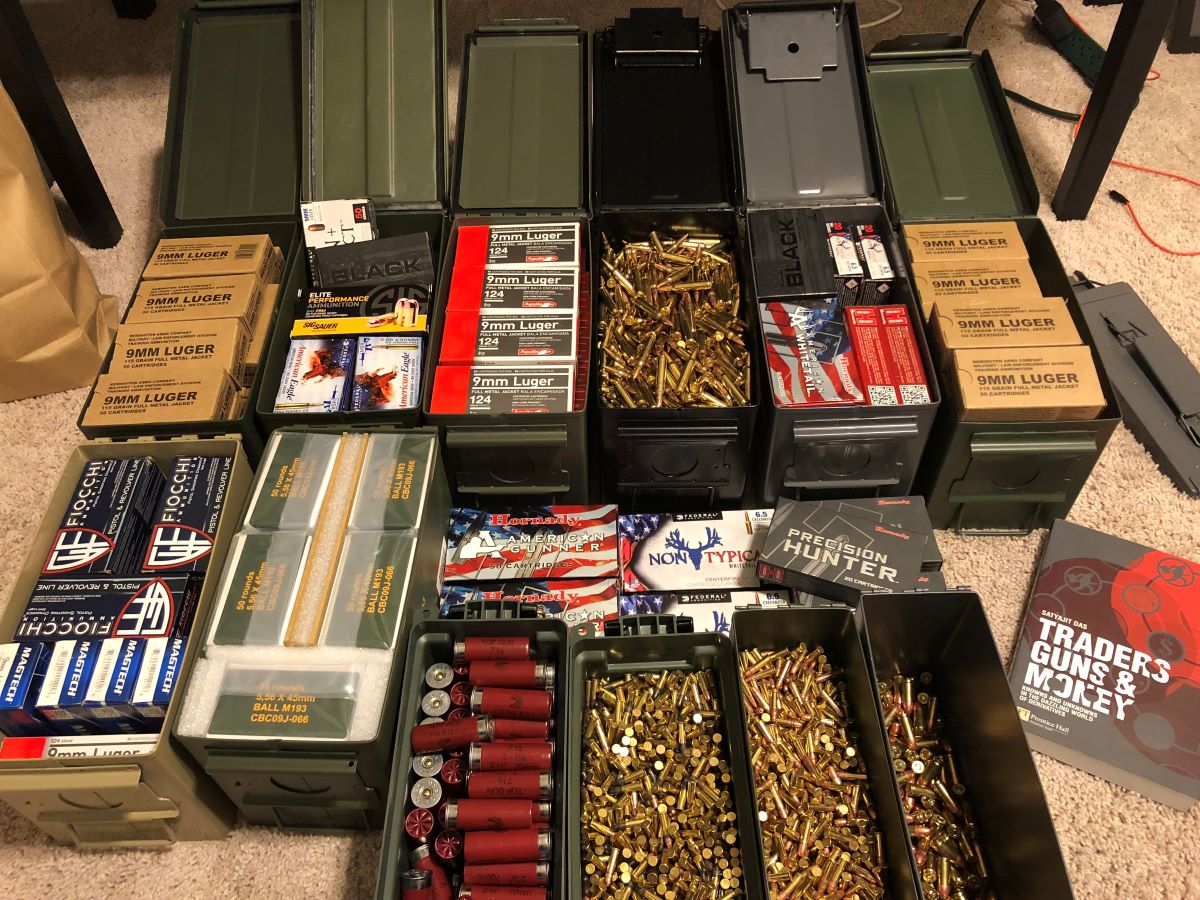

Articles
How To Store Ammunition
Modified: May 6, 2024
Learn the proper way to store ammunition with our informative articles. Keep your ammunition safe and secure for optimal performance and longevity.
(Many of the links in this article redirect to a specific reviewed product. Your purchase of these products through affiliate links helps to generate commission for Storables.com, at no extra cost. Learn more)
Introduction
Welcome to our comprehensive guide on how to store ammunition. Whether you are a firearm enthusiast, a hunter, or simply someone looking for the best way to store your ammunition safely, this article is for you. Proper ammunition storage is vital to ensure the longevity and effectiveness of your rounds, as well as to prevent accidents or damage to your property.
When it comes to storing ammunition, there are several essential factors to consider. This includes selecting the appropriate location, investing in proper containers, organizing and labeling your ammunition, controlling temperature and humidity, following best practices, conducting regular inspections, and knowing how to dispose of expired or damaged rounds. By following these guidelines, you can maintain the quality and reliability of your ammunition for years to come.
Safety should always be the top priority when it comes to handling and storing ammunition. It is crucial to ensure that your ammunition is stored securely and away from unauthorized access. In this guide, we will provide you with comprehensive information on how to accomplish this.
So, whether you are a seasoned shooter looking to optimize your ammunition storage or a beginner seeking guidance on where to start, let’s dive into the details of proper ammunition storage.
Key Takeaways:
- Prioritize safety by storing ammunition in secure, separate locations, away from extreme temperatures and moisture. Regular inspections and proper disposal of damaged or expired rounds are crucial for safety and reliability.
- Choose suitable containers, organize by caliber, and maintain optimal temperature and humidity levels for long-term ammunition storage. Follow best practices, rotate stock, and stay informed about local regulations for responsible storage.
Read also: 11 Best Ammunition Storage Box For 2024
Safety Precautions for Storing Ammunition
When it comes to storing ammunition, safety should always be the primary concern. Properly storing your ammunition not only helps to prevent accidents but also prolongs its lifespan and ensures its effectiveness. Here are some important safety precautions to keep in mind:
- Keep ammunition in a secure location: Store your ammunition in a locked cabinet, safe, or a designated ammunition storage container. This prevents unauthorized access, especially by children or individuals who are not trained in firearms safety.
- Separate ammunition from firearms: It is crucial to store your ammunition separately from your firearms. This helps to prevent accidental discharge and ensures that even if your firearms are stolen, the ammunition cannot be easily used.
- Avoid extreme heat or cold: Ammunition should be stored in an area with a moderate temperature, avoiding extreme heat or cold environments. Extreme temperatures can cause degradation of the propellant and impact the performance of the rounds.
- Keep ammunition dry: Moisture can cause corrosion and damage to ammunition. Store your rounds in a dry location to ensure their integrity. Consider using desiccant packets or dehumidifiers to control humidity if necessary.
- Handle ammunition carefully: Always treat ammunition with care and respect. Avoid dropping or mishandling rounds, as it can result in damage that may compromise their reliability and safety.
- Keep ammunition away from flammable materials: Store ammunition away from flammable substances, such as gasoline, oils, or solvents. Ammunition should be stored in a dedicated area free from any potential fire hazards.
- Keep a record of your ammunition: It is advisable to keep a logbook or record of the ammunition you own. This helps you keep track of when the rounds were purchased, their age, and any abnormalities you may notice during inspections.
By following these safety precautions, you can ensure the secure storage of your ammunition and reduce the risk of accidents or damage. Remember, responsible ammunition storage not only safeguards your own safety but also the safety of those around you.
Choosing the Right Location
When it comes to storing ammunition, selecting the right location is crucial for maintaining its quality and safety. Here are some factors to consider when choosing the perfect spot for ammunition storage:
- Security: The chosen location should offer a high level of security to protect your ammunition. This can include storage options such as a locked cabinet, a safe, or a dedicated ammunition storage container. Choose a location that is secure from unauthorized access, especially if there are children in the household.
- Away from heat sources: Ammunition should be stored away from direct heat sources such as heaters, radiators, or fireplaces. Excessive heat can cause changes in the propellant and potentially compromise the integrity of the rounds.
- Away from extreme temperatures: Extreme temperatures can cause ammunition to deteriorate, affecting its reliability and performance. Avoid storing ammunition in areas that are prone to extreme heat or cold, such as attics, garages, or basements, unless temperature control is possible.
- Low humidity: Moisture is one of the biggest enemies of ammunition. High humidity can lead to corrosion and damage to the rounds. Choose a location with low humidity, or consider using desiccant packets or dehumidifiers to control moisture levels.
- Ventilation: While it is important to store ammunition in a secure location, it is also crucial to ensure adequate ventilation. Good airflow helps to prevent the accumulation of moisture and prevents the area from becoming stagnant.
- Avoid basements or crawl spaces: Basements and crawl spaces are prone to moisture and temperature fluctuations, making them less than ideal for ammunition storage. If you have no other option, ensure proper climate control is in place to safeguard your ammunition.
- Consider concealment: Depending on your personal circumstances, you may want to consider a location that allows for discreet storage of ammunition. This can include options like hidden compartments or specialized furniture pieces designed for secure storage.
Remember, the chosen location should provide a balance between security and environmental control. Assess your available options and select the spot that best meets the criteria outlined above. By choosing the right location, you can ensure the longevity and reliability of your ammunition for years to come.
Ammunition Containers and Storage Options
Choosing the right containers and storage options is essential for properly storing your ammunition. The ideal containers should provide protection from external factors such as moisture, temperature fluctuations, and physical damage. Here are some common ammunition containers and storage options to consider:
- Ammo Cans: Military-style ammo cans are a popular choice for ammunition storage. Made of sturdy metal, they provide excellent protection against moisture and physical damage. They are available in various sizes and can be easily sealed to provide an airtight and waterproof environment for your ammunition.
- Plastic Ammo Boxes: Plastic ammo boxes are another popular option. They are lightweight, durable, and resistant to rust and corrosion. These boxes usually have a secure latch or locking mechanism and come in different sizes to accommodate various calibers.
- Ammo Cabinets or Safes: If you have a substantial amount of ammunition to store, investing in a dedicated ammo cabinet or safe is a wise choice. These cabinets are designed specifically for ammunition storage and often come with additional security features such as lockable doors, fire-resistant construction, and adjustable shelves to accommodate different sizes of ammunition.
- Ammo Bags or Pouches: Ammo bags or pouches are convenient for carrying and transporting smaller quantities of ammunition. They are usually made of durable nylon or canvas and have compartments or pockets to keep the rounds organized and accessible.
- Modular Storage Systems: Modular storage systems, such as stackable plastic bins or crates, offer flexibility and scalability. These systems allow you to customize the storage space according to your specific needs and can be easily expanded as your ammunition collection grows.
- Gun Vaults or Gun Cabinets: If you are storing both firearms and ammunition, a gun vault or cabinet that provides secure storage for both is a practical solution. These specialized storage options often have separate compartments or shelves for firearms and ammunition, allowing you to conveniently keep everything in one place.
When selecting ammunition containers or storage options, consider factors such as durability, moisture resistance, ease of access, and portability. Remember to label your containers or organize them by caliber for easy identification. Additionally, if you are storing different types of ammunition together, consider using dividers or foam inserts to prevent them from rubbing against each other and causing damage.
By investing in high-quality containers and utilizing appropriate storage options, you can protect your ammunition from the elements and ensure its longevity and reliability.
Organizing and Labeling Your Ammunition
Proper organization and labeling of your ammunition are essential for efficient storage and easy access. When it comes to organizing and labeling, there are a few strategies you can follow:
- By Caliber: One of the most effective ways to organize your ammunition is by caliber. Grouping rounds of the same caliber together makes it easier to locate and identify the specific ammunition you need. Use dividers, separate containers, or dedicated sections within larger storage options to keep different calibers separated.
- By Purpose or Load: If you have ammunition for different purposes, such as self-defense, target shooting, or hunting, consider organizing them by their intended use. This allows you to easily select the appropriate rounds for your specific needs.
- Labeling: Labeling your ammunition containers or storage areas is crucial for quick identification. Use waterproof and durable labels or tags to clearly mark the contents of each container. Include relevant information such as the caliber, brand, quantity, and date of purchase or reload.
- Inventory List: Keeping an inventory list of your ammunition is a helpful practice. This ensures that you can easily track the quantity of each caliber and monitor when it is time to restock. Update the list when you acquire new ammunition or when you use rounds from your stockpile.
- Visual Inspection: Regularly inspect your ammunition for any signs of damage, corrosion, or deterioration. Remove any rounds that show signs of compromise and replace them as necessary. By visually inspecting your ammunition, you can maintain the overall quality and safety of your stockpile.
By organizing and labeling your ammunition, you can save time and effort when searching for specific rounds. It also allows you to track your inventory, ensuring that you never run out of the ammunition you need. Additionally, proper organization and labeling contribute to the overall safety of your storage area, as you can quickly identify any potential issues or discrepancies.
Remember to update your labels and inventory list as needed, especially when you add new ammunition to your collection or use rounds from your stockpile. With a well-organized and labeled ammunition storage system, you can easily access your ammunition and ensure that it remains in optimal condition.
Store ammunition in a cool, dry place away from direct sunlight and extreme temperatures. Keep it in its original packaging or a secure, lockable container to prevent moisture and unauthorized access.
Read more: How To Store Store-Bought Bread
Temperature and Humidity Control
Maintaining proper temperature and humidity levels is crucial for the long-term storage of ammunition. Extremes in temperature and humidity can have a detrimental effect on the quality and performance of your rounds. Here are some important factors to consider when it comes to temperature and humidity control:
- Temperature: Ammunition should be stored in an area with a moderate and consistent temperature. Extreme heat can cause the propellant to deteriorate, resulting in decreased performance or potential safety hazards. On the other hand, extreme cold temperatures can also affect ammunition, causing contraction and expansion that can impact its stability. Aim for a temperature range of 50-70 degrees Fahrenheit (10-21 degrees Celsius) for optimal storage conditions.
- Humidity: High humidity is one of the biggest enemies of ammunition storage. Moisture can lead to corrosion, degradation of the propellant, and potential misfires. It is essential to store ammunition in an environment with low humidity. The ideal humidity level for ammunition storage is below 50% relative humidity. Consider using desiccant packets or dehumidifiers to control moisture if necessary.
- Choose the right storage location: When selecting a storage location for your ammunition, it is important to consider temperature and humidity levels. Avoid areas of the house that are prone to temperature fluctuations, such as attics or garages with poor insulation. Basements, while generally cooler, can be problematic if they have high humidity levels. If necessary, use climate control devices to maintain temperature and humidity within the recommended range.
- Check for signs of moisture: Regularly inspect your storage containers and ammunition for any signs of moisture. Look for condensation inside containers, on ammunition, or on the storage shelves. If you notice any moisture, take immediate steps to address and eliminate the source to prevent potential damage to your ammunition.
- Avoid sudden temperature changes: Rapid temperature changes can cause moisture to condense on the ammunition, leading to potential damage. Avoid exposing your ammunition to sudden temperature fluctuations. For example, if you bring ammunition from a cold outdoor environment to a warm indoor space, allow it to gradually adjust to the new temperature before opening or handling the rounds.
By controlling the temperature and humidity levels in your ammunition storage area, you can ensure the longevity and reliability of your rounds. Remember to regularly monitor and maintain optimal conditions to prevent any potential issues that may arise from temperature and humidity fluctuations.
Lastly, it is worth noting that specialized ammunition storage products, such as dehumidifiers or climate-controlled safes, are available on the market. These products can help you to maintain the ideal environment for your ammunition. Consider investing in them if you live in an area with extreme climate conditions or if you have a large ammunition collection that requires extra protection.
Best Practices for Storing Ammunition
When it comes to storing ammunition, there are several best practices that you should follow to ensure the longevity, safety, and reliability of your rounds. By implementing these practices, you can maintain the quality of your ammunition collection and prevent potential issues. Here are some essential best practices for storing ammunition:
- Store in a dedicated area: Keep your ammunition in a designated area that is separate from firearms and other potentially hazardous materials. This helps to prevent accidental discharge and ensures that ammunition remains secure and inaccessible to unauthorized individuals.
- Keep ammunition in its original packaging: Whenever possible, it is best to store ammunition in its original factory packaging. The manufacturers design packaging to provide adequate protection against moisture, physical damage, and temperature fluctuations. If you need to transfer ammunition to a different container, ensure that the new container offers the same level of protection.
- Avoid overstocking: It can be tempting to stockpile large quantities of ammunition, especially during times of uncertainty or increased demand. However, it is important to avoid overstocking beyond what you can reasonably use or maintain. Proper turnover and regular usage of your ammunition help to ensure the freshness and reliability of the rounds.
- Regularly rotate stock: Implement a system to rotate your ammunition stock. Use older ammunition first and replenish your supply with newer rounds to maintain a fresh inventory. This practice helps to prevent rounds from becoming stale or corroded over time.
- Keep ammunition dry: Moisture is a significant threat to ammunition. Ensure that your storage area is dry and free from any sources of moisture. Consider using desiccant packs or dehumidifiers to help control humidity levels if necessary.
- Avoid exposing ammunition to sunlight: Prolonged exposure to direct sunlight can cause ammunition to heat up, leading to potential safety hazards and damage. Store your ammunition in a shady area away from direct sunlight to maintain its integrity.
- Train other household members: If you live with others, ensure that they understand the importance of ammunition safety and storage practices. Teach them about safe handling and storage procedures to prevent accidents or unauthorized access to your ammunition.
- Follow local laws and regulations: Familiarize yourself with the laws and regulations regarding ammunition storage in your jurisdiction. Different regions may have specific requirements or restrictions on how ammunition should be stored. Complying with these regulations ensures both your safety and legal compliance.
By following these best practices, you can maintain the quality, reliability, and safety of your ammunition. Remember, responsible ammunition storage is not only important for your own well-being but also for the safety of those around you.
Regular Inspections and Maintenance
Regular inspections and maintenance are important aspects of ammunition storage. By regularly assessing the condition of your rounds and storage containers, you can identify any potential issues early on and take necessary steps to address them. Here are some key points to consider when it comes to regular inspections and maintenance:
- Visual inspections: Conduct visual inspections of your ammunition regularly. Look for any signs of damage, corrosion, or abnormalities. Pay attention to the overall condition of the rounds, including the bullets, casings, and primers. If you notice any issues, such as dents, cracks, or discoloration, separate those rounds from the rest of your stockpile.
- Inspect storage containers: Regularly inspect your storage containers or areas for any signs of damage or deterioration. Check for any moisture or pest infestations that may compromise the integrity of your ammunition. If your storage containers show signs of wear or degradation, consider replacing them with more suitable options.
- Address moisture issues: Moisture can be a significant problem in ammunition storage. If you notice any signs of moisture, such as condensation inside containers or on the ammunition, investigate and eliminate the source. Use desiccant packs or dehumidifiers to control humidity levels and prevent corrosion.
- Rotate your stock: Regularly rotate your ammunition stock to ensure that older rounds are used first. This helps to maintain a fresh supply of ammunition and prevents rounds from becoming stale or unreliable.
- Keep records: Maintain a detailed record of the ammunition you own, including the date of purchase, brand, and any inspection notes. This allows you to keep track of the age and condition of your ammunition and helps you to identify any patterns or issues over time.
- Dispose of damaged or expired ammunition: If you come across any damaged or expired ammunition during your inspections, it is important to safely dispose of them. Contact local law enforcement agencies or ammunition manufacturers for guidance on proper disposal methods.
- Stay updated on proper storage practices: Stay informed about the latest storage practices and guidelines for ammunition. Periodically research and familiarize yourself with updated recommendations from reputable sources to ensure that you are implementing the best practices for storage and maintenance.
Regular inspections and maintenance play a critical role in ensuring the safety and reliability of your ammunition. By staying proactive and attentive in your inspections, you can address any issues promptly and maintain the quality of your ammunition stockpile.
Remember, the aim of regular inspections and maintenance is to ensure that your ammunition remains in optimal condition and ready to perform when needed. Implementing these practices will give you peace of mind and ensure the longevity of your ammunition collection.
Disposal of Expired or Damaged Ammunition
Proper disposal of expired or damaged ammunition is essential for safety reasons. Ammunition that is past its expiration date, corroded, damaged, or deemed unsafe should never be used or stored indefinitely. Here are some guidelines to follow when it comes to the disposal of expired or damaged ammunition:
- Do not use or handle damaged ammunition: If you come across ammunition that is visibly damaged, corroded, or does not appear to be in proper condition, it is crucial to avoid handling or attempting to use it. Safety should always be the top priority, and using compromised ammunition can lead to dangerous malfunctions or accidents.
- Contact local law enforcement agencies: If you need to dispose of damaged or expired ammunition, it is best to contact your local law enforcement agency or explosive ordnance disposal (EOD) unit for guidance. They are trained in handling and disposing of potentially dangerous materials and can provide you with the necessary instructions.
- Do not throw ammunition in the regular trash: It is important to note that ammunition should never be thrown in the regular household trash. Ammunition contains potentially hazardous materials and can represent a safety risk if not disposed of properly.
- Follow local regulations: Make sure to comply with any local or regional regulations regarding the disposal of ammunition. Different areas may have specific rules in place for the proper disposal of ammunition, so it is important to familiarize yourself with them.
- Ammunition buy-back programs: Some communities or law enforcement agencies offer ammunition buy-back programs, where you can turn in unwanted or expired ammunition. These programs provide a safe and responsible way to dispose of ammunition and may offer a small reimbursement.
- Assistance from ammunition manufacturers: Certain ammunition manufacturers or distributors may have specific guidelines or programs in place for the disposal of their products. Contact the manufacturer or distributor directly to inquire about any available options for proper disposal.
Remember, proper disposal of expired or damaged ammunition is crucial for safety and environmental reasons. It is essential to follow the recommended procedures to ensure that the ammunition is handled and disposed of safely and responsibly.
By adhering to these guidelines, you can help prevent accidents, protect the environment, and contribute to the overall safety of your community.
Read more: How To Store Basil From Grocery Store
Conclusion
Effective ammunition storage is not only about keeping your rounds organized but also about ensuring their longevity, reliability, and safety. By following the guidelines and best practices outlined in this comprehensive guide, you can store your ammunition in a way that maximizes its quality and minimizes potential risks.
Start by prioritizing safety precautions such as storing ammunition in a secure location and keeping it separate from firearms. Choose the right storage location that offers proper temperature and humidity control, protecting your rounds from extreme conditions. Utilize suitable containers and storage options designed explicitly for ammunition to provide optimal protection.
Remember to organize and label your ammunition to enable easy identification and rotation. Regular inspections and maintenance, along with proper record-keeping, help you keep track of the condition and age of your ammunition. Dispose of any expired or damaged ammunition responsibly by contacting local law enforcement agencies or following manufacturer guidelines.
By implementing these practices, you can ensure the longevity and reliability of your ammunition, while also prioritizing safety and meeting legal requirements. It is essential to stay informed about any updates or changes in storage guidelines, as best practices may evolve over time.
Always prioritize safety and responsible storage practices when it comes to ammunition. By doing so, you can enjoy peace of mind, protect yourself and others, and maintain the quality and effectiveness of your ammunition for years to come.
Remember, responsible ammunition storage is an ongoing process, requiring regular attention and maintenance. Keep yourself updated on the latest information and guidelines to ensure that you are taking the necessary steps to store your ammunition properly. By following these recommendations, you can enjoy your shooting activities while maintaining a safe and well-maintained ammunition supply.
Now that you've got the basics down for storing ammunition securely, why stop there? For enthusiasts ready to upgrade their storage solutions, our detailed guide on the best ammunition storage boxes for 2024 offers a wealth of options designed to safeguard your rounds. Whether you're a casual shooter or a serious marksman, finding the right container is key to maintaining your ammo's integrity. Dive into our recommendations to ensure your munitions are stored in nothing but the best.
Frequently Asked Questions about How To Store Ammunition
Was this page helpful?
At Storables.com, we guarantee accurate and reliable information. Our content, validated by Expert Board Contributors, is crafted following stringent Editorial Policies. We're committed to providing you with well-researched, expert-backed insights for all your informational needs.
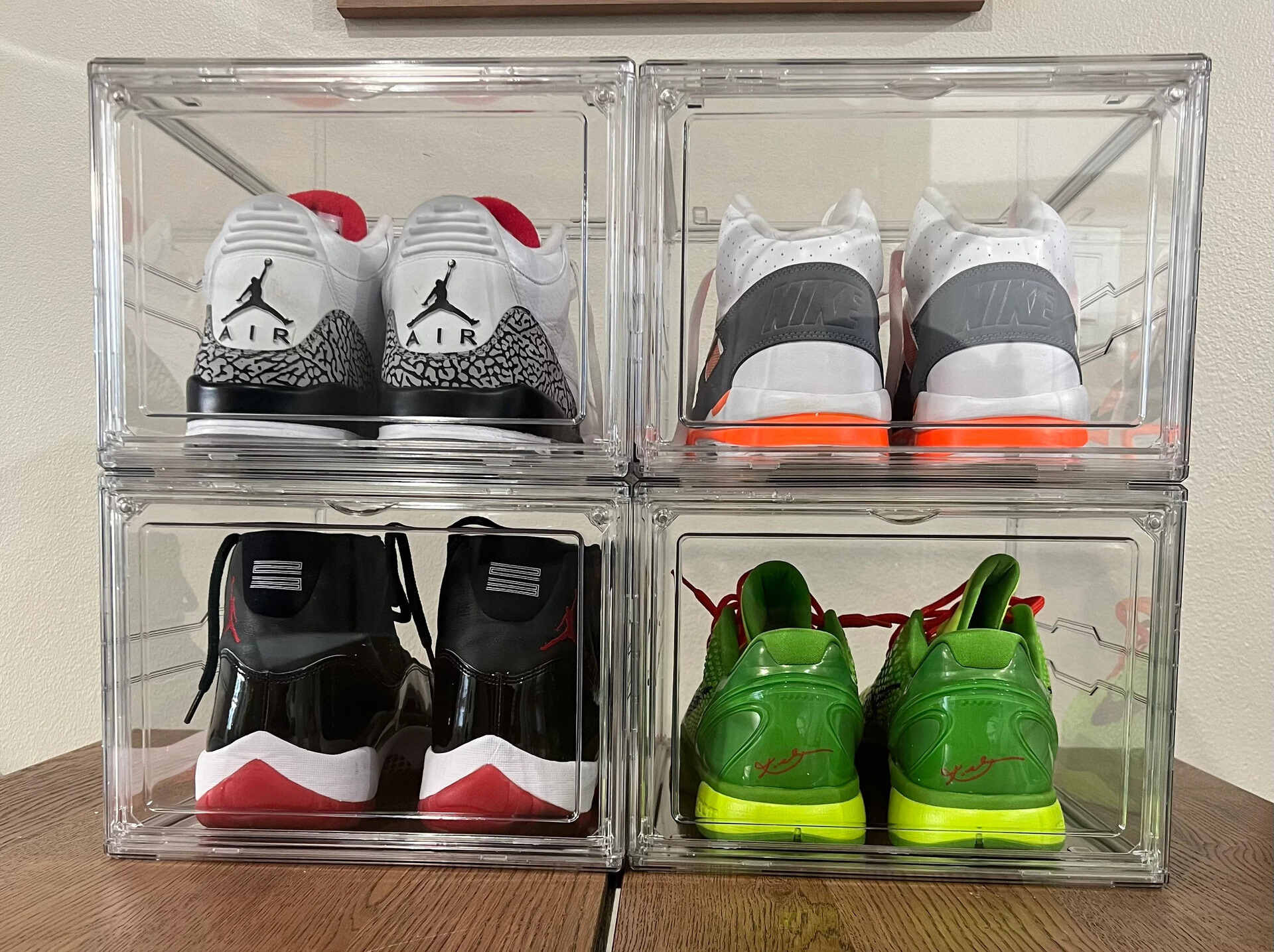


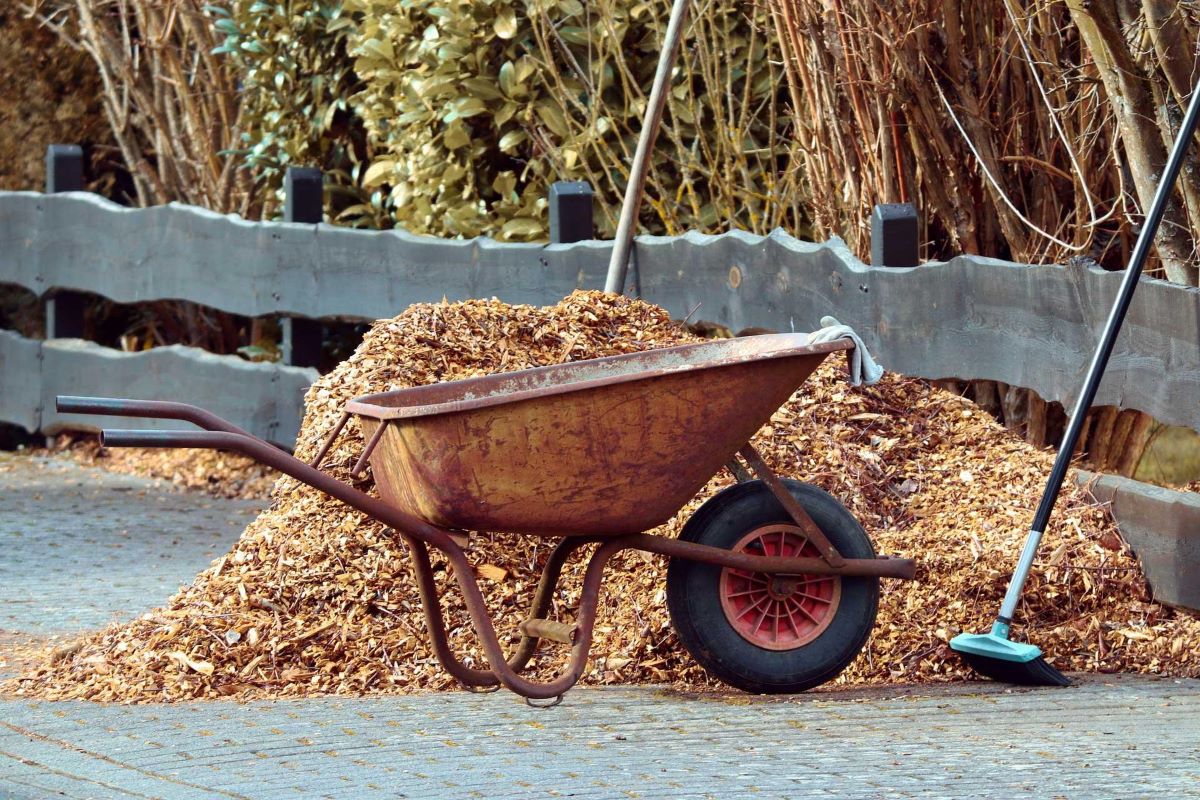



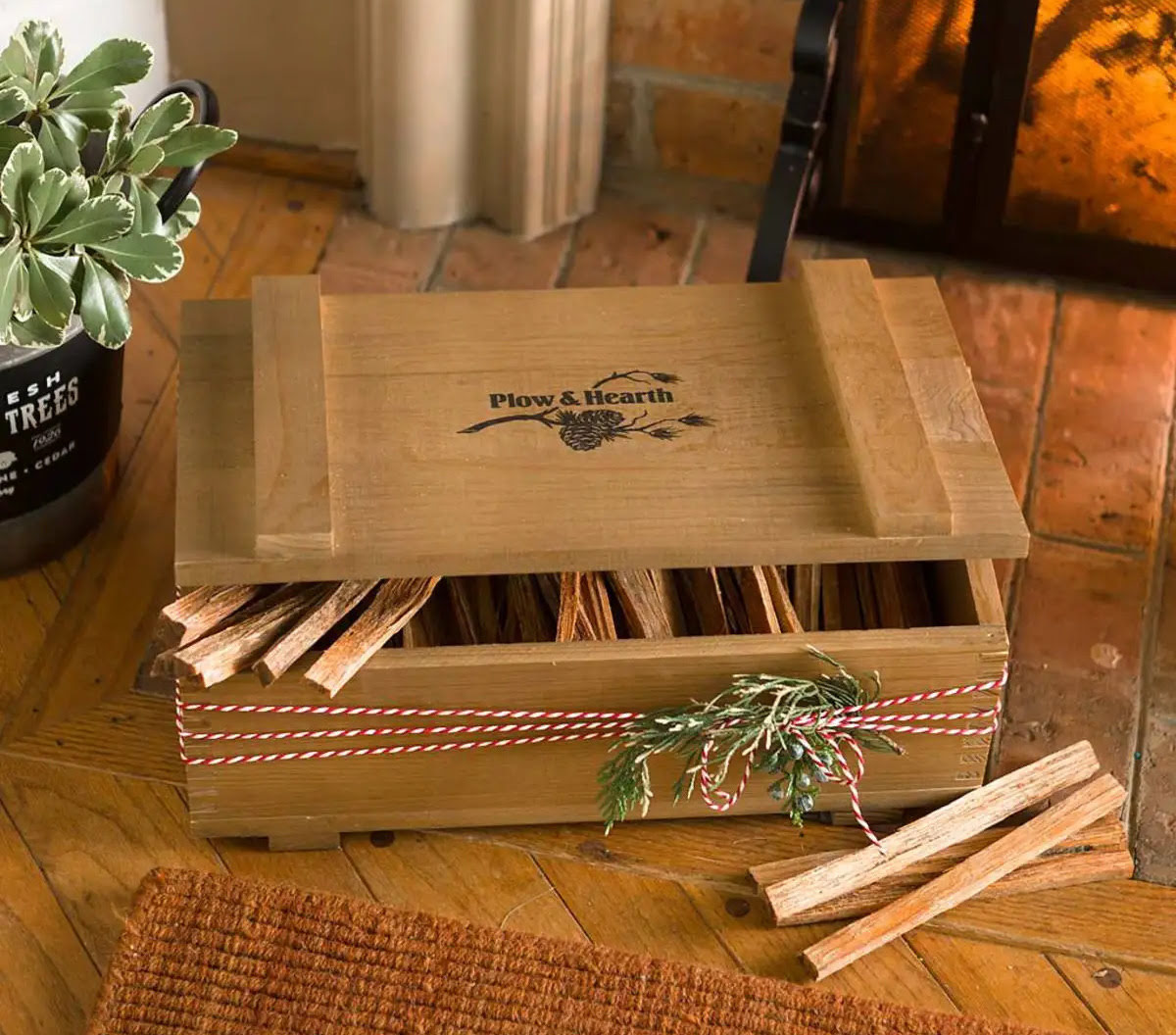

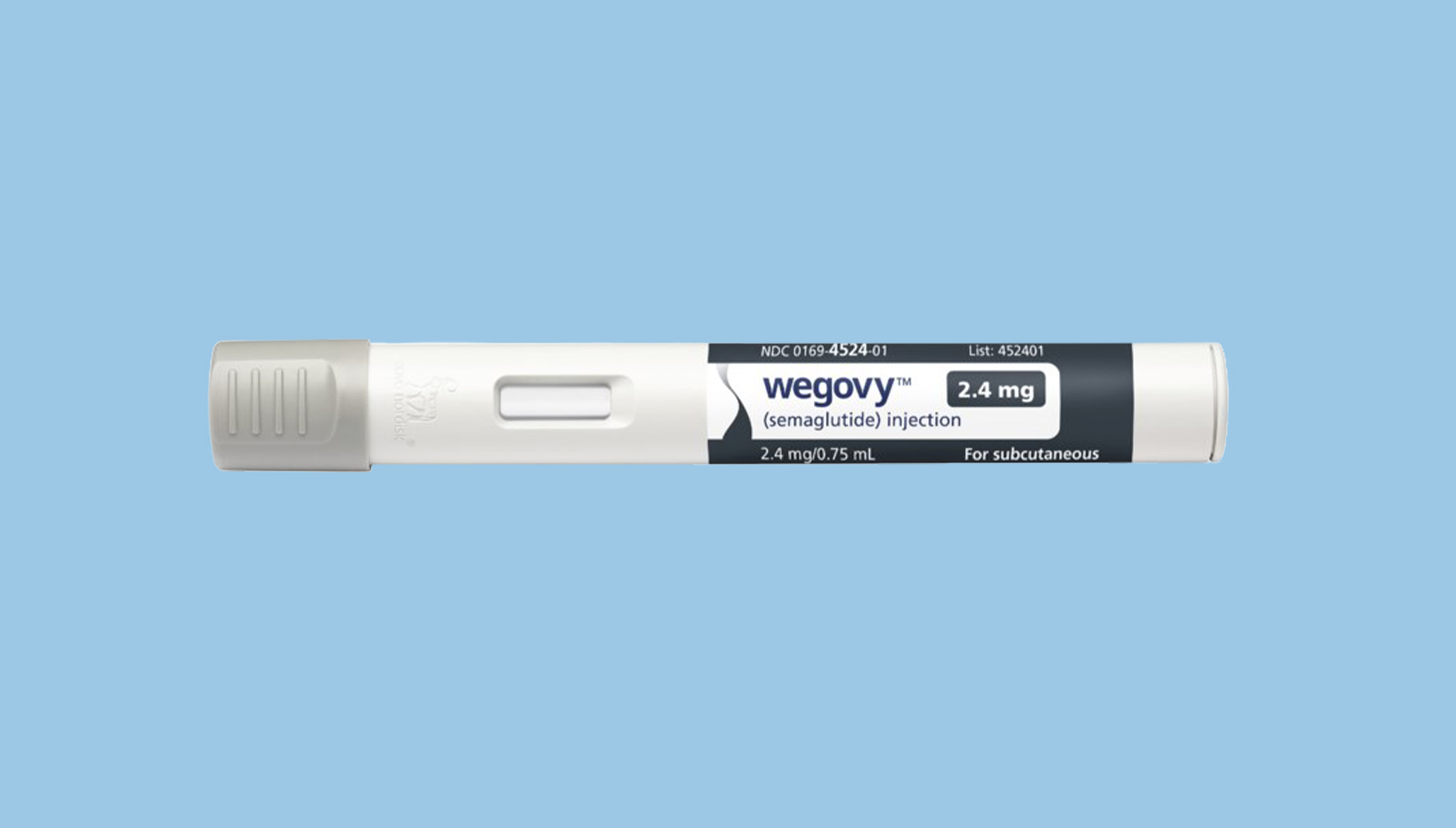




0 thoughts on “How To Store Ammunition”